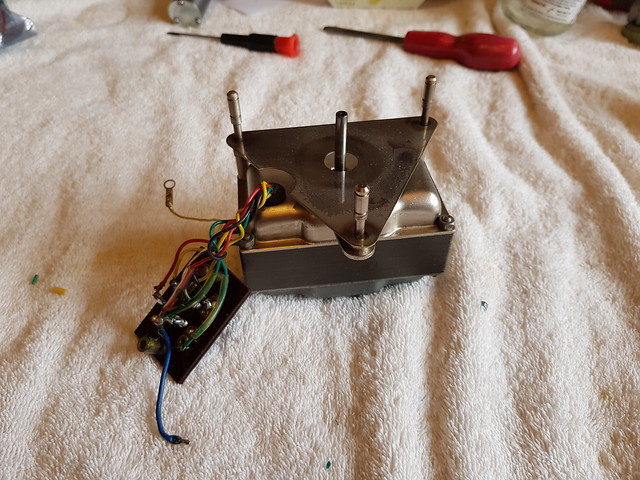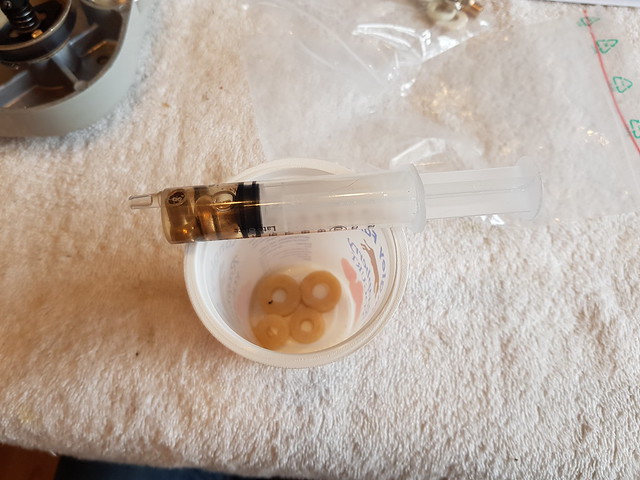Mike P
Trade: Pickwell Audio
I seem to be doing a lot of TD124's recently, this is my third in the last couple of months.
The latest one is owned by @schneiderhan (aka Matt) of this parish. Matt explained that it had a full rebuild service at Schopper in 2010 so it ought to be pretty much sorted and would probably only need a quick service. "No problem" I said...
 20240215_163853 by Michael Pickwell, on Flickr
20240215_163853 by Michael Pickwell, on Flickr
When I got the TD124 on the bench the first thing I did was to remove the platter (alloy platter) together with the spindle. Straight away I noticed that the ball at the bottom of the spindle was in a terrible state!
 20240203_114422 by Michael Pickwell, on Flickr
20240203_114422 by Michael Pickwell, on Flickr
Hmm...I wonder why they didn't replace the ball? Anyway no bother, the knackered ball was removed and replaced with a lovely grade 5 ceramic ball.
Of course given the state of the original ball it was no surprise that the thrust pad was also toast, despite being replaced in 2010. The original bearing cap and gasket had ben replaced too but the original bearing cap is very poor in my opinion and I recommend to Matt that this be upgraded to a better bearing cap from Audiosilente. Matt agreed so on it went including a new thrust pad.
The latest one is owned by @schneiderhan (aka Matt) of this parish. Matt explained that it had a full rebuild service at Schopper in 2010 so it ought to be pretty much sorted and would probably only need a quick service. "No problem" I said...
 20240215_163853 by Michael Pickwell, on Flickr
20240215_163853 by Michael Pickwell, on FlickrWhen I got the TD124 on the bench the first thing I did was to remove the platter (alloy platter) together with the spindle. Straight away I noticed that the ball at the bottom of the spindle was in a terrible state!
 20240203_114422 by Michael Pickwell, on Flickr
20240203_114422 by Michael Pickwell, on FlickrHmm...I wonder why they didn't replace the ball? Anyway no bother, the knackered ball was removed and replaced with a lovely grade 5 ceramic ball.
Of course given the state of the original ball it was no surprise that the thrust pad was also toast, despite being replaced in 2010. The original bearing cap and gasket had ben replaced too but the original bearing cap is very poor in my opinion and I recommend to Matt that this be upgraded to a better bearing cap from Audiosilente. Matt agreed so on it went including a new thrust pad.
Last edited:























